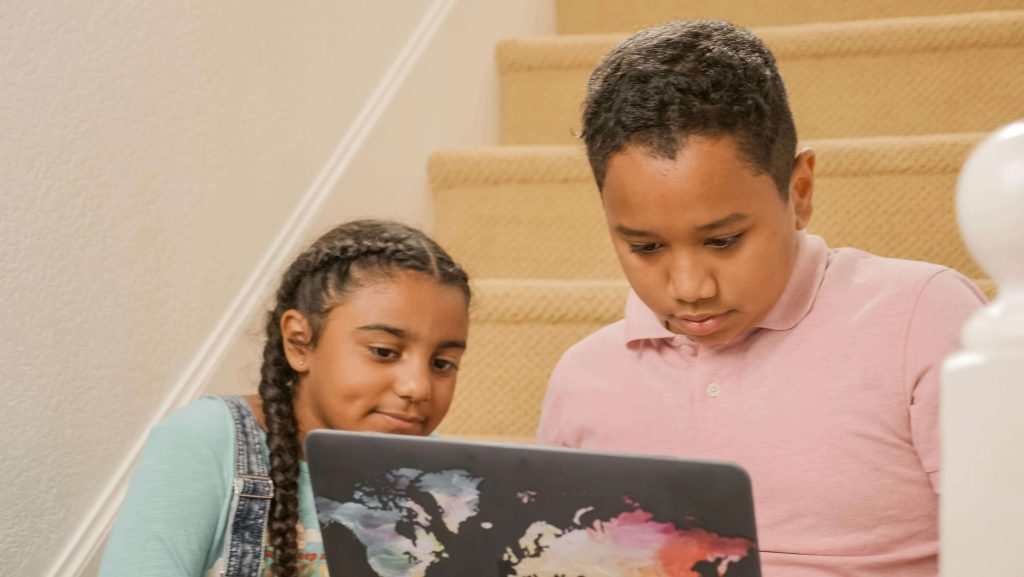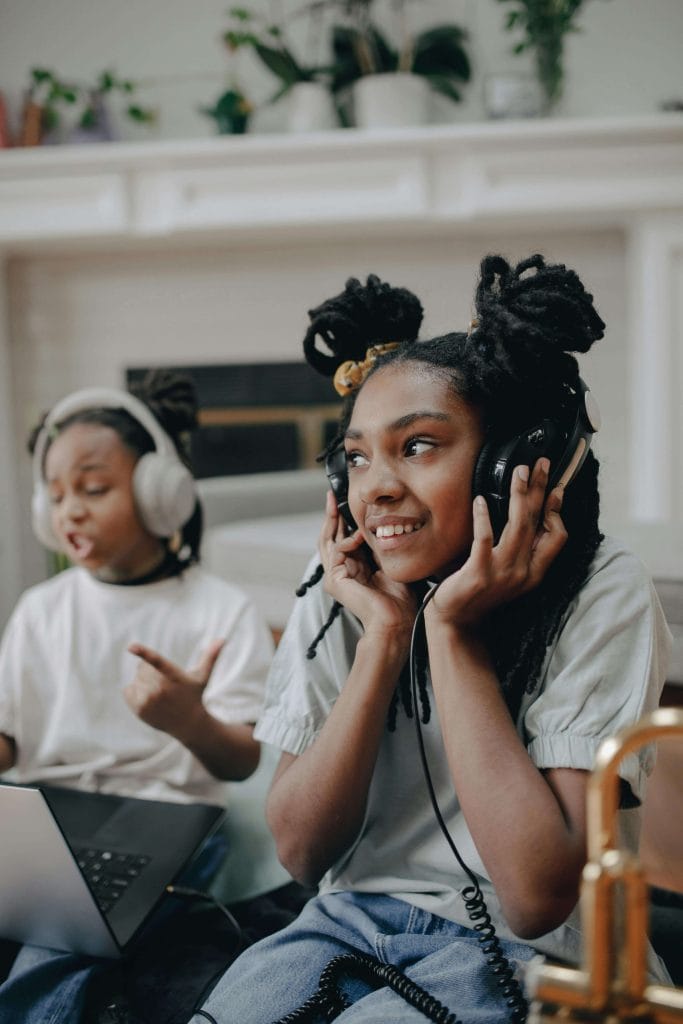4 Auditory Sensitivity Strategies for Kids with Autism
It can happen anywhere: a birthday party, the bathroom, even the grocery store. One minute your child is calm, and the next they’re covering their ears, crying, or having a meltdown. For families of a noise sensitive child, moments like these are more than occasional.
This kind of reaction isn’t about overreacting or being “too sensitive.” It may be a sign of auditory sensitivity, where everyday sounds (like flushing toilets, hand dryers, or crowded rooms) feel overwhelming, even painful. Children with autism are especially likely to experience sensitivity to loud noises, and it can show up in ways that are confusing or distressing for everyone involved.
As a school psychologist with years of experience supporting families of neurodivergent kids, I’ve seen how hard it can be to know what to do. In this post, I’ll cover what auditory sensitivity really looks like and why it happens, the relationship to emotional regulation, and a range of practical auditory sensitivity strategies you can try at home.

What Is Auditory Sensitivity and Why Does It Happen?
Auditory sensitivity is more than just disliking loud sounds. For some children, everyday noises can feel overwhelming or even painful. This heightened response is often tied to what’s known as sensory over-responsivity, a type of sensory defensiveness in children where certain sensory input (like sound) is experienced as more intense or intrusive than it would be for others.
While many kids might cover their ears during a fireworks show or a noisy hand dryer in a public bathroom, children with more persistent sensitivity to noise may struggle in regular, day-to-day situations. These are the kids who may break down during fire drills, refuse to use public restrooms, or become anxious in a loud cafeteria.
They might also have difficulty filtering out background noise, which can make it hard to focus in classrooms, at family gatherings, or during unstructured play. This isn’t just a preference. It’s often a sign that their nervous system is processing sound differently.
Auditory sensitivity can show up on its own, but it’s also common in children with autism, ADHD, and sensory processing disorder. In some cases, there’s no formal diagnosis at all. Some kids are simply wired to take in sound more intensely. You may also notice that children who are sensitive to noise are often sensitive to light, texture, or movement as well.
This kind of noise sensitivity in toddlers and older children doesn’t always look dramatic. It might show up as irritability, avoidance, or a general sense of being overwhelmed. That’s why it’s so important to understand what’s really going on beneath the surface.
As a school psychologist, I’ve seen how hypersensitivity in autism and related profiles can impact a child’s ability to participate, connect, and self-regulate at school and at home. My goal is to help parents recognize what’s happening early, so they can respond with clarity and confidence, rather than confusion or trial and error.
Auditory Sensitivity and Emotional Regulation
When a child is constantly managing an intense response to sound, it takes a toll not just on their ears, but on their nervous system as a whole. This kind of overwhelm with noise doesn’t stay contained in the sensory system. It spills over into emotions, behavior, and overall regulation.
For many kids, sensory overload can lead to what’s often described as a sensory meltdown: a full-body response that may look like yelling, crying, or a complete loss of control. Other children may shut down instead, going quiet, withdrawing, or seeming disconnected. These autistic shutdowns can be harder to spot, but they’re often just as intense and just as important to support.
Understanding the difference between a meltdown and a shutdown can help you respond in ways that actually help, rather than escalate. If you’re unsure how to tell them apart, I break it down more fully in this post about sensory meltdowns and shutdowns, including what to watch for and how to adjust your response in the moment. And if your child tends to stay in shutdown mode longer than expected, you might find it helpful to read about what recovery can look like after an extended shutdown.
In either case, what children need most is connection. Co-regulation (being a calm, steady presence while their body finds its way back to safety) is often more effective than any quick fix. Over time, those moments of support become the foundation for self-regulation.
When we understand how sensory input and emotional regulation are connected, it becomes easier to meet our children with empathy instead of frustration and that’s what helps them feel safe, seen, and supported.

Practical, Parent-Centered Auditory Sensitivity Strategies
Supporting a noise sensitive child does not require a complete lifestyle overhaul. What it does require is thoughtful observation, gentle preparation, and simple routines that prioritize regulation and connection. These strategies are designed to meet families where they are, with realistic steps that honor both the child’s needs and the parent’s role.
Preparing for Noisy Environments
For many children, knowing what to expect is one of the most effective ways to reduce sensory stress.
- Use social stories or visual cues. Short, clear visuals or story-based scripts can help prepare your child for noisy situations before they happen. Autism Little Learners and Boardmaker both offer templates that can be adapted to your child’s age and understanding.
- Practice with sound at home. Playing background noise at a low volume or using audio clips of common sounds allows your child to build familiarity in a safe setting.
- Incorporate auditory processing activities. Gentle auditory processing activities for kids like sound matching games, listening walks, or identifying household noises can help build tolerance over time. Look for suggestions from reputable occupational therapy blogs that focus on regulation, not exposure for the sake of exposure.
The goal is not to push your child to tolerate discomfort. It is to help them build awareness and confidence, one small step at a time.
Creating Quiet Zones at Home
Even in a busy household, there can be space for stillness.
- Limit sensory clutter. Reducing visual and auditory noise in common areas can help children feel less overwhelmed. This might mean turning off background television, using natural light, or choosing soft furnishings that absorb sound.
- Offer calming tools. Items like white noise machines, cozy corners, or weighted blankets can help create a sense of calm.
Children who are sensitive to light and noise often benefit from a dedicated space that feels predictable and safe, not just during dysregulation but also during everyday transitions.

Navigating Everyday Triggers
Common sounds like vacuum cleaners, public toilets, or noisy siblings can be tough. While they are often unavoidable, they can be managed with care.
- Plan ahead. Give your child a heads-up when you know a trigger is coming. For example, let them know when the vacuum will be on, and offer a preferred activity or alternative space in advance.
- Consider protective gear. Some children benefit from headphones or noise-reducing earphones that filter background sound without blocking it entirely. This can be especially helpful for children who experience difficulty filtering out background noise in settings like school or grocery stores.
- Balance exposure with respect. Sensory desensitization is sometimes recommended, but it should always be grounded in consent and trust. The goal is not to force tolerance, but to create safety and build resilience over time.
Helping your child feel in control during noisy moments is often more important than eliminating the noise altogether.
Responding to Overload in the Moment
When your child is overwhelmed by noise, they are not giving you a hard time. They are having a hard time. Your response can be the bridge back to calm.
- Notice the early signs. Changes in posture, covering ears, or sudden irritability can all indicate that your child is reaching their limit.
- Create calming routines. A simple break, quiet time in a familiar space, or using a sensory tool can help your child feel more grounded. Some families create a small sensory kit with familiar items they can use on the go.
- Reflect before correcting. Instead of focusing on how your child expressed distress, consider what their response is telling you. Responding with compassion helps build trust and models emotional awareness.
Supporting a sensory accommodation in the moment does not mean avoiding everything that is hard. It means helping your child recover in ways that protect their dignity and preserve your connection.
What If You’re Still Unsure What’s Going On?
It is completely normal to have questions. Maybe your child covers their ears often, but only in certain places. Maybe they seem fine one day and overwhelmed the next. Or maybe you just have a gut feeling that something about sound feels harder for them than it does for other kids.
You do not need to have everything figured out to take the next step.
If your child regularly struggles in noisy settings, avoids common sounds, or shows signs of distress when there is a lot of background noise, it may be time to bring in a professional. Talking with your child’s pediatrician is often a good place to start. They can help rule out hearing issues and refer you for further support if needed. Occupational therapists are trained to assess and support sensory needs, including those related to sound. In some cases, a psychologist may also help you determine whether your child would benefit from a more formal evaluation.
At school, these needs may be addressed through sensory accommodations, either informally or as part of a larger support plan. If you suspect your child might benefit from classroom changes, additional movement breaks, or tools like headphones or a quiet corner, you can request a school-based evaluation. This might lead to a 504 Plan or an Individualized Education Program (IEP). If you are not sure how to begin that process, this guide to requesting special education support can help.

Some children may also benefit from an auditory processing evaluation, especially if they show signs of difficulty following directions in noisy environments, tuning out background sound, or making sense of what they hear even when their hearing is normal. These evaluations are typically completed by audiologists or speech-language pathologists who specialize in auditory processing.
As a school psychologist, I often help parents make sense of these early signs, especially when things do not fit neatly into a box. You do not have to know the exact label or diagnosis to begin offering support. Curiosity, observation, and a willingness to act without panic are some of the most powerful tools you have.
Supporting Yourself While Supporting Your Child
When your child is sensitive to sound, it often means you are managing not just their overstimulation, but your own response to it as well. That can be exhausting. The constant vigilance, the planning, the quick pivots when the environment is too much, it all adds up. And yet, this part of the experience often goes unspoken.
You matter in this process too.
Noticing your own sensory limits is a powerful form of awareness. Maybe certain sounds wear you down more quickly than others. Maybe the emotional intensity of your child’s reaction leaves you feeling on edge long after the moment has passed. Paying attention to those cues can help you stay more regulated and more connected.
A few reflection prompts to keep in mind:
- What sounds feel most activating or draining for me?
- When do I feel most grounded, even when my child is struggling?
- What helps me reset after a hard moment?
Supporting your own nervous system is not a luxury. It is essential. Whether that looks like stepping outside for fresh air, listening to music that soothes you, or making time for rest when you can, your body needs support too.
Final Thoughts: You Know Your Child Best
If you are here, reading about auditory sensitivity strategies, it is because you care deeply about helping your child feel more comfortable and more understood. That already says a lot.
You do not need to have all the answers today. You do not need to fix every sound or anticipate every reaction. What matters most is staying curious, staying connected, and noticing what helps your child feel safer in their world.
Even small shifts can have a big impact. Something as simple as offering a break during loud transitions, creating a quieter corner at home, or introducing a new sensory support (like a fidget toy or listening routine) can make daily life feel more manageable. If you’re also supporting your child’s social growth alongside sensory needs, some of the ideas in this post on early social development may be helpful as well.
If this post helped you take a deep breath or think about things in a new way, I’d love to keep supporting you. I write about autism, ADHD, learning differences, and emotional regulation with real-life parenting in mind. You can subscribe to the blog to receive new posts directly!







